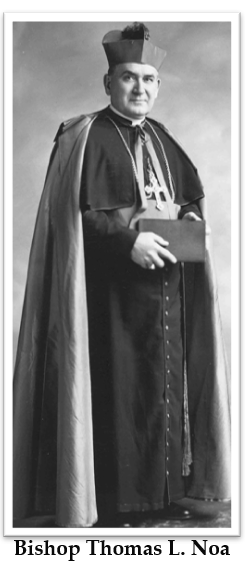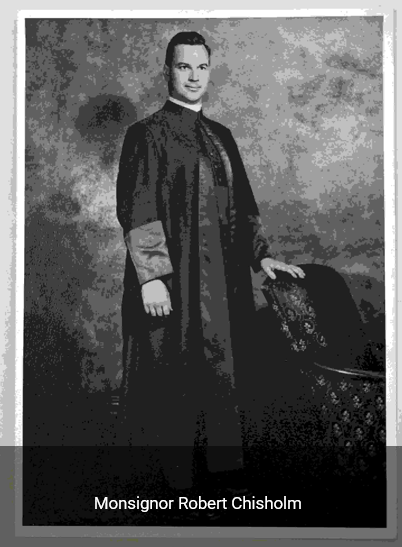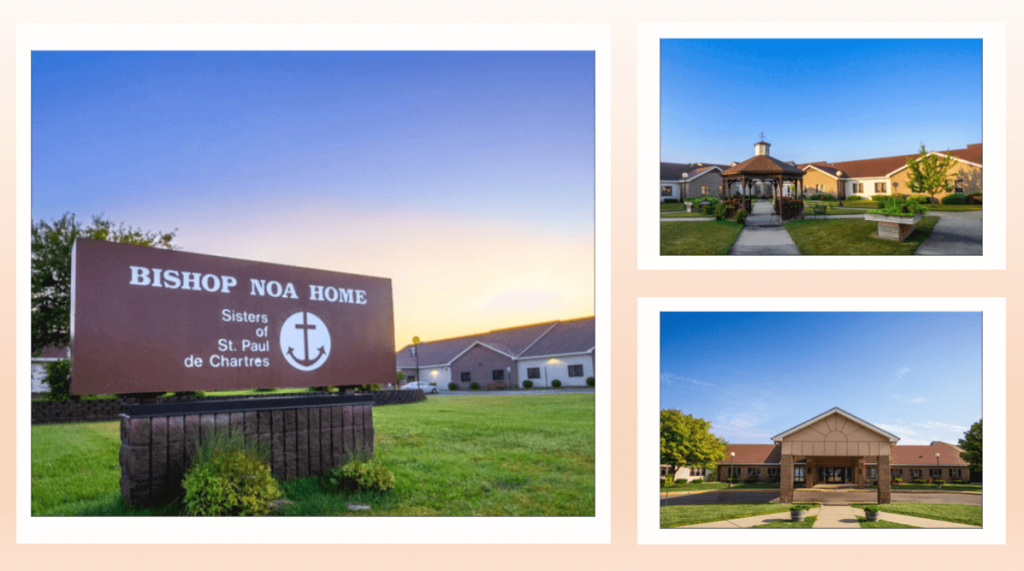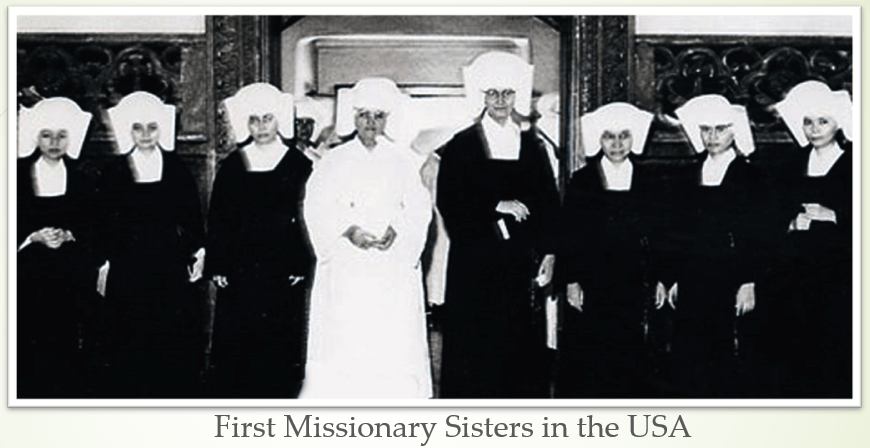History of the SPC District of USA
The Sisters of St. Paul came to the Diocese of Marquette upon the invitation of the Bishop of Marquette, Thomas L. Noa. He wanted a community of Sisters who would establish a Novitiate in his diocese, so that young women eager to become Religious would not have to go outside the Upper Peninsula of Michigan. The Bishop took his request to the Superior General of the Sisters of St. Paul when he went to Rome for the Second Vatican council in 1963.
It was through Monsignor Robert Chisholm, then chancellor to Bishop Noa, that the Bishop came to know the Sisters of St. Paul de Chartres in the first place. Monsignor’s brother, Brother Edward Chisholm, at that time a Christian Brother in the Philippine Islands, worked with our Sisters there and helped them during World War II. Brother Edwards wrote to his brother, Msgr. Chisholm and asked him to send money to help the Sisters and others, which Monsignor did at that time as well as after the War.


Years later two Sisters from Manila were in the States and they took the opportunity to visit Monsignor Chisholm and thank him personally for helping in the Philippines and Monsignor introduced the Sisters to Bishop Noa.

Some time later Bishop Noa remembered the Sisters and asked them about establishing a community of Sisters of St. Paul de Chartres in the Diocese of Marquette as well as to staff the Bishop Noa Home, a residence for Senior Citizens and retired priests of the Diocese. While in Rome for the Second Vatican Council, the Bishop contacted Reverend Mother General and made an official invitation for the Sisters of St. Paul to come to the Diocese of Marquette.

The missionary spirit of the Congregation of the Sisters of St. Paul was evident from the start in 1963. The first group that arrived in Marquette represented four nationalities: French, Irish, Filipino and Canadian. The Sisters were nine in number. Three of them began to work at the Bishop Noa Home in Escanaba. At the outset there were thirty-seven senior citizens to care for, but the number grew, and today the home is full to its capacity of 109. The other six Sisters set up house at the former Holy Family Orphanage, near St. Peter’s Cathedral. There they devoted themselves to the care of the orphans and some Cuban refugee boys – sewing, cooking and supervising their academic studies. They also undertook the apostolate of imparting religious knowledge to children.
It was during this time that the Superior General of the Sisters of St. Paul came from Rome to confer with Bishop Noa regarding the establishment of a Novitiate for the formation of religious vocations to the Congregation. The Novitiate was opened on January 25, 1964, the Feast of St. Paul, our patron saint. From 1964 to 1967, the Novitiate has its headquarters in the Holy Family Orphanage where a number of young women sought entrance, eager to give their lives to God and the Church in the service of their sisters and brothers.
The first reception and the clothing with the religious habit of the Sisters of St. Paul took place in St. Peter’s Cathedral, with Bishop Noa himself officiating.
In 1964, a parish priest of Menominee, Fr. Thomas L. Dunleavy requested Sisters to staff his school. Thereupon, seven Filipino Sisters were assigned to the St. William Catholic School. Within eight months, grades one through eight got under way. In the time of Fr. Louis Bracket, it was replete with eight grades. Later the Catholic School Board of Education consolidated the Catholic Schools thus becoming Catholic Central North and Catholic Central South Schools.
In 1965, the Sisters moved from the Holy Family Orphanage building to St. John’s Parish, and took up their abode in a house formerly occupied by the Franciscan Sisters. The Novitiate was transferred from the Orphanage to an old convent in Ishpeming for two years.
St. Christopher’s Parish opened a school in 1967 during the pastorate of Father Edmund Szoka – presently cardinal in Rome. In 1979, a kindergarten was added to the system; later on a preschool and a day-care program were also added. The Sisters served in the school system until the school closed in 1987. They continued to serve in the parish as Directors of Religious Education, Pastoral Ministry, and Parish Administrators.
The District House and Novitiate on the old Monsignor Pinten Farm, on Country Road 492, was in the process of being built in 1966. The old house occupied by the Sisters of St. John’s Parish was torn down and for eight months they took up residence in the convent of the Sisters of St. Joseph of Carondolet, in St. Michael’s Parish. By 1967, the new District House and Novitiate on Pinten Farm was completely finished. The blessing of the new District House and Novitiate took place on July 14, 1968. Bishop Salatka, then the Bishop of Marquette, officiated at the ceremony and two Council Members of the Congregation came from Rome. Through the years the Sisters have continued to serve the people of God in the Diocese of Marquette: prison visitation, summer religion programs, Live-Ins for young women, Cursillo, Youth Ministry, Adult Education, vocation promotion, helping St. Vincent de Paul and care to the elderly and shut-ins.
In response to the appeal of the United States Bishops to work among the minority populations of our country, the Sisters accepted the invitation of Archbishop James Hickey to teach in a black parish in Washington, D.C. We have continued to serve in the archdiocese of Washington, D.C. as Director of Religious Education, hospital chaplain, and an aid to the parish staff. Once again, the “tranquil daring” so eloquently propounded by our 17 th century founders and so ingrained in every Sisters of St. Paul has borne fruit in this mission.
In 1988, our community assumed sponsorship of the Bishop Noa Home in Escanaba. After 25 years of serving there, we celebrated our 25 th Anniversary in this mission to the Senior Citizens and retired priests of the Diocese. It gave us great joy in 1990 to begin construction on a new 109 bed “Bishop Noa Home” Facility in Escanaba. We moved into our new facility in 1992. Now owned and operated by the Sisters of St. Paul, the facility includes 12 independent apartments. In 1998 we saw the joyous addition of 17 more assisted-living apartments.
Throughout the years our Sisters continued to respond to the needs of the Diocese in varying capacities from Parish Ministry to volunteering at St. Vincent de Paul. The call of God and the needs of God’s people continue to invite us to leave all and follow in the footsteps of Jesus, in service to the Kingdom of the Father.
